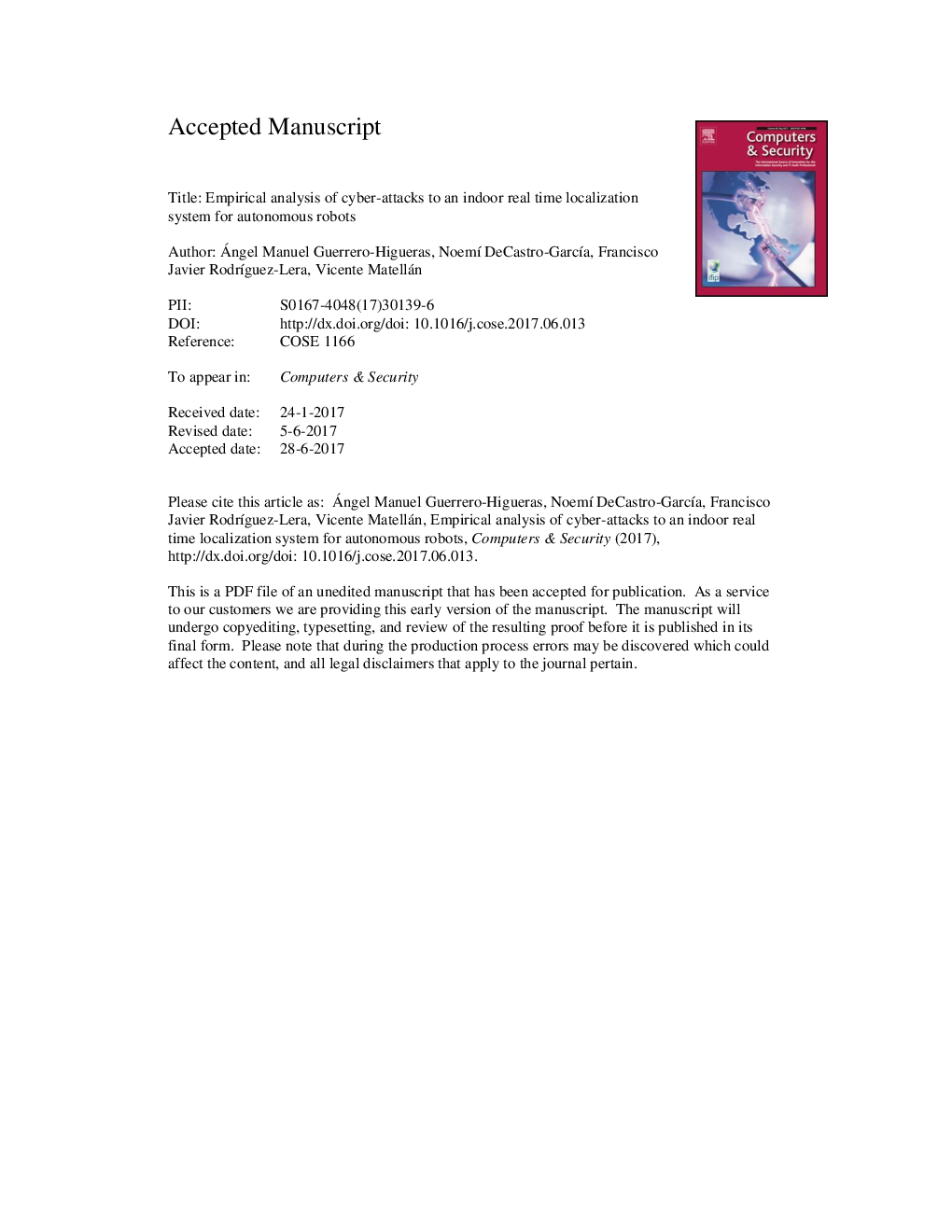| Article ID | Journal | Published Year | Pages | File Type |
|---|---|---|---|---|
| 4955428 | Computers & Security | 2017 | 28 Pages |
Abstract
Real Time Location Systems (RTLSs) are critical components of many mobile robots that rely on them to safely operate in different environments, and their cyber-security is a growing concern. The goal of this paper is to demonstrate that there are statistically meaningful differences in the data provided by beacon-based RTLSs between the case when there is an attacker or none, which can be used to detect attacks. A procedure to choose the more discriminant distribution of beacons is presented, as well as its empirical validation, based on data provided by a commercial RTLS used by a mobile robot for indoor navigation. In the evaluation, three basic alternatives to define the distribution of beacons were considered to see which one was more discriminant, that is, the one with more differences. Statistical differences in the data gathered by the mobile robot, when the localization system is under attack, and when it is not, have been found. It has been also verified that these differences are larger or smaller depending on the location of the beacons.
Keywords
Industrial control systemRTLSAOAUWBTDOAWSNTOAKNNCUSUMICSIDSBEACONiPSk-Nearest NeighborsROSSLAMCybersecurityTime Difference of ArrivalCumulative sumCyber-attackDenial of ServiceDOSRoboticsAngle of arrivalTime of ArrivalGPSIntrusion detection systemGlobal Positioning SystemIndoor positioning systemWireless sensor networkSVMSupport vector machineSimultaneous localization and mappingIndoor positioningUltra wideband
Related Topics
Physical Sciences and Engineering
Computer Science
Computer Networks and Communications
Authors
Ángel Manuel Guerrero-Higueras, Noemà DeCastro-GarcÃa, Francisco Javier RodrÃguez-Lera, Vicente Matellán,
